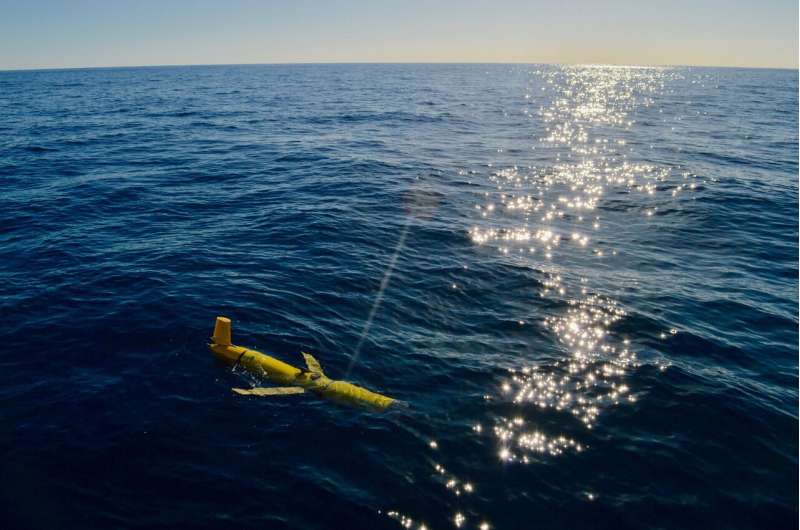High temperatures add more stress to Australia's Great Barrier Reef

Ocean temperatures across parts of the Great Barrier Reef have been above or close to thresholds where there is a high risk of coral bleaching for several weeks. During this time, temperature readings from marine weather stations operated by the Australian Institute of Marine Science (AIMS) have shown sea surface temperatures throughout most of the Reef at 1 to 2.5°C above average.
Fortunately, cooler weather over the weekend has brought some relief, reducing the immediate likelihood of severe widespread bleaching. Nevertheless, if clear skies and low wind conditions return, so will the risk of bleaching.
AIMS Oceanographer Craig Steinberg said AIMS is working closely with the Great Barrier Reef Marine Park Authority (GBRMPA) and specialists from other national and international agencies to ensure we have the most comprehensive understanding of conditions on the Reef.
"Our knowledge and long-term understanding of northern Australian waters tell us warming oceans place enormous pressure on the Reef's ecology. If heatwave conditions persist or worsen, we can expect corals to exhibit stress and experience some level of regional bleaching," he said
Mr Steinberg said they received temperature data from satellites, AIMS' marine weather stations, and an in-water autonomous robot, to monitor temperatures in real time. A network of more than 170 electronic temperature loggers is also deployed across the Reef.
"We have re-deployed an Integrated Marine Observing System (IMOS) underwater glider to areas of concern in the waters north-east of Townsville," he said.
"With its on-board sensors, the glider provides our scientists with information about ocean properties at different depths of the water column including temperature and light, to help explain any observed levels of coral bleaching."
"Knowing how deep the warm surface layer is, can help determine the depth corals are likely to experience heat stress.
AIMS' long-term coral reef monitoring team is at sea on the RV Cape Ferguson, recording conditions at our long-term sites. The team will visit reefs in the central GBR over the next week and then move to the southern areas in late March.
These observations provide detailed insights as to the level of bleaching now, and in context of the long-term health on the reefs AIMS has regularly surveyed for 35 years.
This scientific information helps AIMS understand marine heat phenomena and, given the vast size of the Great Barrier Reef, prioritize locations to observe. The observations together with models can help scientists predict regions most at risk of bleaching.
According to the Bureau of Meteorology, 2019 was Australia's warmest year on record. At the end of last year, sea surface temperatures were cooler than average in the Coral Sea but warmer offshore of north-western Australia. This situation has now reversed in 2020.
AIMS Chief Executive Officer Dr. Paul Hardisty said the underlying trend of ocean warming means there is increased stress on Australian reefs, and an increased likelihood of bleaching in any given year.
"This year, we have come close to a major bleaching event. We are still on the knife-edge. How the reef fares will depend on weather conditions over the next few weeks. Importantly, this is happening in a non El-Niño year," Dr. Hardisty said.
"The next major El Niño event, which typically results in warmer sea temperatures on the reef at this critical time of year, poses a real risk for the reef. We need to be prepared as oceans continue to warm.
"The scale and severity of the bleaching damage in 2016 and 2017 highlighted the critical threat warming ocean temperatures pose to coral reefs.
"Coral reefs typically take a decade or more to recover from disturbances like severe bleaching events, yet they are becoming more frequent. Without a reduction of global temperatures, the health of the Reef is expected to continue to decline."
Dr. Hardisty said the closer the world gets to achieving the goals of the Paris Accord, the greater the chance we can preserve coral reefs, and sustain their functions and values.
"If we want to safeguard coral reefs for the future, we also need to begin developing options for intervening on the Great Barrier Reef to help it cope better with climate change, in conjunction with reducing global greenhouse gas emissions," he said.
"That's why we at AIMS, are focusing our research to breed heat tolerant corals to help them adapt, recover and survive warming ocean conditions. We are also a partner with many leading scientific organizations in the Federal Government-funded Reef Restoration and Adaptation Program."
Dr. Hardisty said, changing local and regional weather conditions affected the likelihood of bleaching and would be a critical factor in the health of the Reef. The weather over the next few weeks will determine if the waters in Queensland will warm further and lead to significant bleaching, or certain events would cause them to cool.
"Our research teams have also been closely watching warming sea surface temperatures off Western Australia, but this has turned around due to ocean temperatures changing quickly in response to local weather conditions.
"The tracks of three tropical cyclones (TC Blake, TC Claudia and most recently, TC Damien) provided some relief to the coral reefs off northwest Australia, but temperatures in this region typically remain high until April.
"Fortunately, in Queensland over the weekend we have also experienced cooler weather which is bringing water temperatures down by ~1 to 1.5 deg C from peak temps of 31 deg C on some areas of the Great Barrier Reef.
"Winds are being drawn from the Coral Sea toward Tropical Cyclone Esther bringing with them heavy cloud and rainfall.
"We are continuing to closely monitor the situation, as clear skies and low winds may return over the next few weeks and warming conditions may resume, " Dr. Hardisty said.
More information: AIMS long-term monitoring team on the water with RV Cape Ferguson, Davies reef weather station, and AIMS divers – 2017 bleaching: cloudstor.aarnet.edu.au/plus/s/lrcSnsbtlRW5kRw
Provided by Australian Institute of Marine Science (AIMS)



















